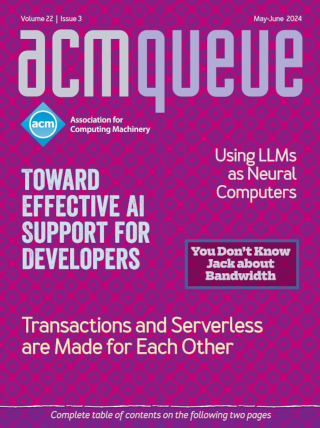
Internal Access Controls:
Trust, but Verify
Every day seems to bring news of another dramatic and high-profile security incident, whether it is the discovery of longstanding vulnerabilities in widely used software such as OpenSSL or Bash, or celebrity photographs stolen and publicized. There seems to be an infinite supply of zero-day vulnerabilities and powerful state-sponsored attackers. In the face of such threats, is it even worth trying to protect your systems and data? What can systems security designers and administrators do?
Scalability Techniques for Practical Synchronization Primitives:
Designing locking primitives with performance in mind
In an ideal world, applications are expected to scale automatically when executed on increasingly larger systems. In practice, however, not only does this scaling not occur, but it is common to see performance actually worsen on those larger systems.
Too Big to Fail:
Visibility leads to debuggability.
Our project has been rolling out a well-known, distributed key/value store onto our infrastructure, and we’ve been surprised - more than once - when a simple increase in the number of clients has not only slowed things, but brought them to a complete halt. This then results in rollback while several of us scour the online forums to figure out if anyone else has seen the same problem. The entire reason for using this project’s software is to increase the scale of a large system, so I have been surprised at how many times a small increase in load has led to a complete failure. Is there something about scaling systems that’s so difficult that these systems become fragile, even at a modest scale?
Disambiguating Databases:
Use the database built for your access model.
The topic of data storage is one that doesn’t need to be well understood until something goes wrong (data disappears) or something goes really right (too many customers). Because databases can be treated as black boxes with an API, their inner workings are often overlooked. They’re often treated as magic things that just take data when offered and supply it when asked. Since these two operations are the only understood activities of the technology, they are often the only features presented when comparing different technologies.





